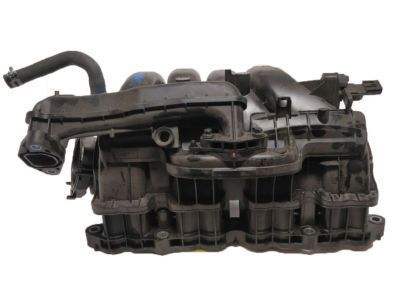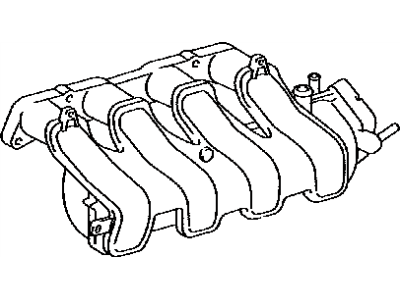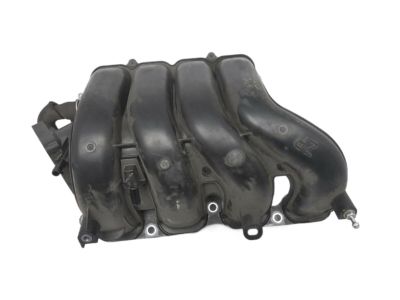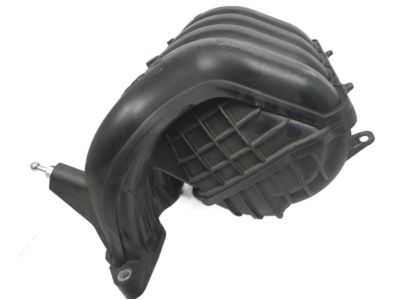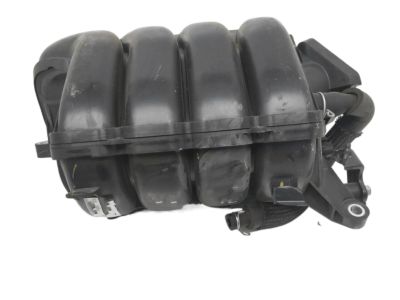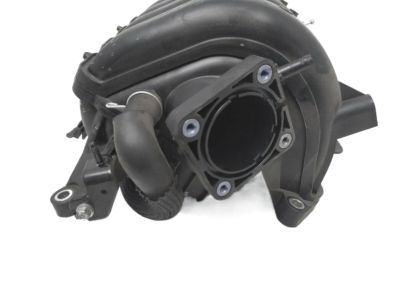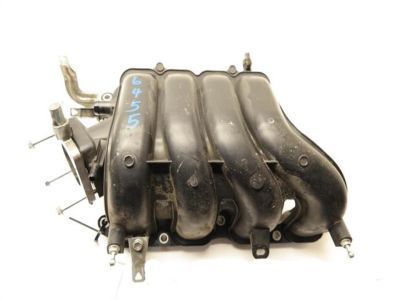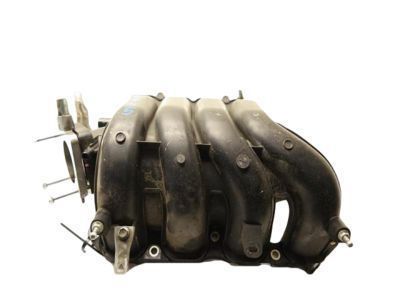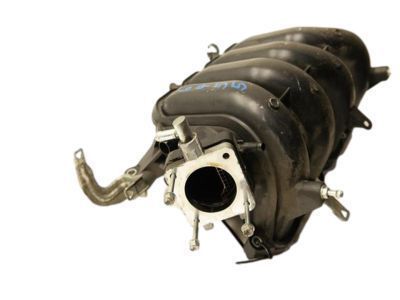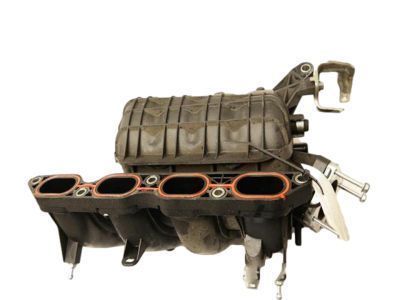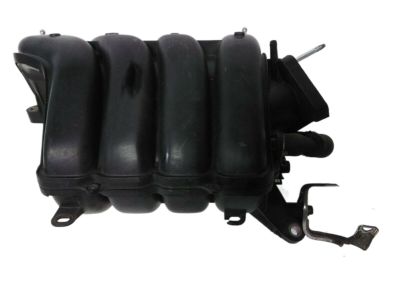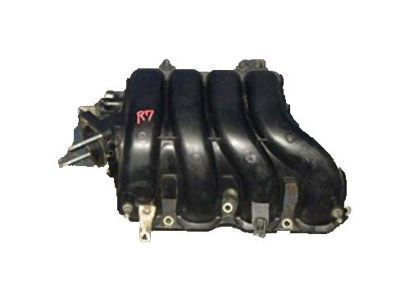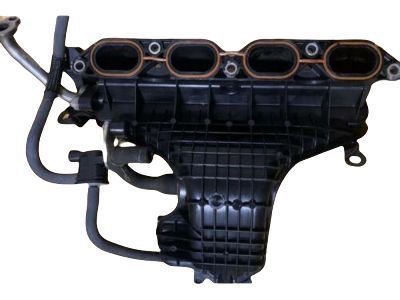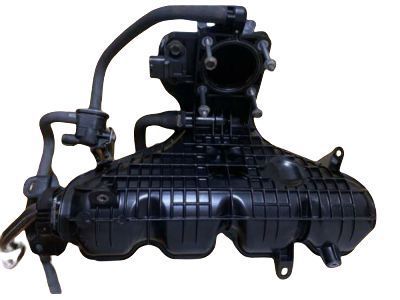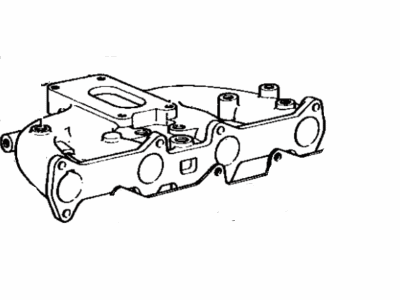

My Garage
My Account
Cart
Genuine Toyota Corolla Intake Manifold
Engine Intake Manifold- Select Vehicle by Model
- Select Vehicle by VIN
Select Vehicle by Model
orMake
Model
Year
Select Vehicle by VIN
For the most accurate results, select vehicle by your VIN (Vehicle Identification Number).
44 Intake Manifolds found
Toyota Corolla Manifold Assembly, INTAK
Part Number: 17120-24010$268.41 MSRP: $384.89You Save: $116.48 (31%)Toyota Corolla Manifold Assembly, INTAK
Part Number: 17120-0T080$271.43 MSRP: $389.21You Save: $117.78 (31%)Ships in 1-2 Business DaysToyota Corolla Manifold Assembly, INTAK
Part Number: 17120-0T011$297.88 MSRP: $427.13You Save: $129.25 (31%)Ships in 1-3 Business DaysToyota Corolla Intake Manifold
Part Number: 17120-0T010$297.88 MSRP: $427.13You Save: $129.25 (31%)Ships in 1-3 Business DaysToyota Corolla Manifold Assembly, INTAK
Part Number: 17120-37031$271.43 MSRP: $389.21You Save: $117.78 (31%)Ships in 1-3 Business DaysToyota Corolla Manifold Assembly, INTAK
Part Number: 17120-0T012$220.62 MSRP: $316.35You Save: $95.73 (31%)Ships in 1-2 Business DaysToyota Corolla Manifold Assembly, INTAK
Part Number: 17120-37110$232.45 MSRP: $333.32You Save: $100.87 (31%)Ships in 1-3 Business DaysToyota Corolla Manifold Assembly, INTAK
Part Number: 17120-F2010$268.41 MSRP: $384.89You Save: $116.48 (31%)Toyota Corolla Intake Manifold
Part Number: 17120-0D040$359.58 MSRP: $536.42You Save: $176.84 (33%)Ships in 1-3 Business DaysToyota Corolla Intake Manifold
Part Number: 17120-22030$359.58 MSRP: $536.42You Save: $176.84 (33%)Ships in 1-3 Business DaysToyota Corolla Intake Manifold
Part Number: 17120-0D080$368.83 MSRP: $550.22You Save: $181.39 (33%)Ships in 1-3 Business DaysToyota Corolla Intake Manifold
Part Number: 17120-37020$297.88 MSRP: $427.13You Save: $129.25 (31%)Ships in 1-3 Business DaysToyota Corolla Manifold Assembly, INTAK
Part Number: 17120-37022$220.62 MSRP: $316.35You Save: $95.73 (31%)Ships in 1-2 Business DaysToyota Corolla Intake Manifold
Part Number: 17111-88601$347.81 MSRP: $498.74You Save: $150.93 (31%)Ships in 1-3 Business DaysToyota Corolla Intake Manifold
Part Number: 17120-22070$368.83 MSRP: $550.22You Save: $181.39 (33%)Ships in 1-3 Business DaysToyota Corolla Intake Manifold
Part Number: 17101-16240$375.80 MSRP: $560.63You Save: $184.83 (33%)Ships in 1-3 Business DaysToyota Corolla Intake Manifold
Part Number: 17111-25903$217.49 MSRP: $315.08You Save: $97.59 (31%)Ships in 1-3 Business DaysToyota Corolla Intake Manifold
Part Number: 17101-16200$337.96 MSRP: $504.17You Save: $166.21 (33%)Ships in 1-3 Business DaysToyota Corolla Intake Manifold
Part Number: 17101-16040$242.07 MSRP: $347.12You Save: $105.05 (31%)Ships in 1-3 Business Days
| Page 1 of 3 |Next >
1-20 of 44 Results
Toyota Corolla Intake Manifold
If you are in demand for superior quality and affordable OEM Toyota Corolla Intake Manifold, then shop with us! We own a wide range of the reduced-priced genuine Toyota Corolla Intake Manifold. You can purchase in confidence as all parts come with a manufacturer's warranty. Any issues with our products? No need to worry as we have a hassle-free return policy to guide you every step of the way.
Toyota Corolla Intake Manifold Parts Questions & Experts Answers
- Q: How to remove and install Intake Manifold on Toyota Corolla?A:To remove the components, first relieve the fuel system pressure, then disconnect the negative cable from the battery. Next, remove the engine cover, release the two clamps, and set aside the fuel-injection wiring harness. Remove the fuel rail and injectors as an assembly, and also detach the throttle body from the intake manifold, labeling and disconnecting the necessary components such as the PCV hose, accelerator cable, air intake duct and air filter cover, throttle body, and fuel rail and injectors. Note that 2005 and later models feature a "drive-by-wire" electronic throttle control, which does not use a cable, so disconnect the electrical connector at the throttle motor on the throttle body. Label and detach the PCV and vacuum hoses connected to the rear of the intake manifold, then remove the intake manifold mounting nuts, bolts, and support bracket bolts, taking out the manifold and gasket from the engine. For installation, clean the mating surfaces of the intake manifold and Cylinder Head with lacquer thinner or acetone, and if the gasket shows signs of leaking, have the manifold checked for warpage and resurfaced if necessary. Install a new gasket over the manifold studs, position the manifold on the cylinder head, and install the nuts, bolts, and brackets, tightening them in three or four equal steps from the center outwards to avoid warping. After tightening the manifold-to-cylinder head bolts to the proper torque, tighten the lower bracket bolts. Reinstall the remaining parts in the reverse order of removal, check the coolant level and add as necessary, then check the throttle linkage for smooth operation before starting the engine. Once the engine is running, check for coolant and vacuum leaks, and conduct a road test to ensure proper operation of all accessories, including the cruise control system if equipped.
Related Toyota Corolla Parts
Browse by Year
2024 Intake Manifold 2023 Intake Manifold 2022 Intake Manifold 2021 Intake Manifold 2020 Intake Manifold 2019 Intake Manifold 2018 Intake Manifold 2017 Intake Manifold 2016 Intake Manifold 2015 Intake Manifold 2014 Intake Manifold 2013 Intake Manifold 2012 Intake Manifold 2011 Intake Manifold 2010 Intake Manifold 2009 Intake Manifold 2008 Intake Manifold 2007 Intake Manifold 2006 Intake Manifold 2005 Intake Manifold 2004 Intake Manifold 2003 Intake Manifold 2002 Intake Manifold 2001 Intake Manifold 2000 Intake Manifold 1999 Intake Manifold 1998 Intake Manifold 1997 Intake Manifold 1996 Intake Manifold 1995 Intake Manifold 1994 Intake Manifold 1993 Intake Manifold 1992 Intake Manifold 1991 Intake Manifold 1990 Intake Manifold 1989 Intake Manifold 1988 Intake Manifold 1987 Intake Manifold 1986 Intake Manifold 1985 Intake Manifold 1984 Intake Manifold 1983 Intake Manifold 1982 Intake Manifold 1981 Intake Manifold 1980 Intake Manifold 1979 Intake Manifold 1978 Intake Manifold 1977 Intake Manifold 1976 Intake Manifold 1975 Intake Manifold
